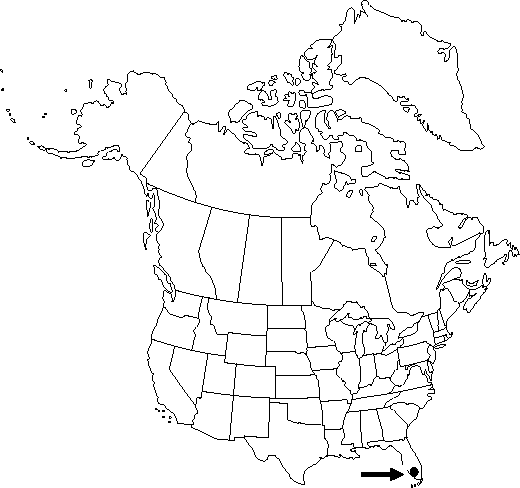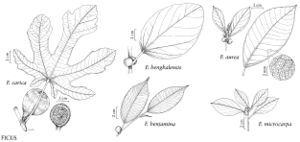Difference between revisions of "Ficus benjamina"
Mant. Pl., 129. 1767.
FNA>Volume Importer |
imported>Volume Importer |
||
| (5 intermediate revisions by 2 users not shown) | |||
| Line 10: | Line 10: | ||
|special_status={{Treatment/ID/Special_status | |special_status={{Treatment/ID/Special_status | ||
|code=F | |code=F | ||
| − | |label= | + | |label=Illustrated |
}}{{Treatment/ID/Special_status | }}{{Treatment/ID/Special_status | ||
|code=I | |code=I | ||
| Line 19: | Line 19: | ||
|name=Urostigma benjamina | |name=Urostigma benjamina | ||
|authority=(Linnaeus) Miquel | |authority=(Linnaeus) Miquel | ||
| + | |rank=species | ||
}} | }} | ||
|hierarchy=Moraceae;Ficus;Ficus benjamina | |hierarchy=Moraceae;Ficus;Ficus benjamina | ||
| Line 34: | Line 35: | ||
|elevation=0-10 m | |elevation=0-10 m | ||
|distribution=Fla.;West Indies (Lesser Antilles);native to Asia. | |distribution=Fla.;West Indies (Lesser Antilles);native to Asia. | ||
| + | |introduced=true | ||
|discussion=<p><i>Ficus benjamina</i> is commonly cultivated as a houseplant. The name probably refers to the supposed relation of the plant to the source of a resin or benzoin procured from the Orient in antiquity.</p> | |discussion=<p><i>Ficus benjamina</i> is commonly cultivated as a houseplant. The name probably refers to the supposed relation of the plant to the source of a resin or benzoin procured from the Orient in antiquity.</p> | ||
|tables= | |tables= | ||
| Line 43: | Line 45: | ||
-->{{#Taxon: | -->{{#Taxon: | ||
name=Ficus benjamina | name=Ficus benjamina | ||
| − | |||
|authority=Linnaeus | |authority=Linnaeus | ||
|rank=species | |rank=species | ||
| Line 58: | Line 59: | ||
|publication title=Mant. Pl., | |publication title=Mant. Pl., | ||
|publication year=1767 | |publication year=1767 | ||
| − | |special status= | + | |special status=Illustrated;Introduced |
| − | |source xml=https:// | + | |source xml=https://bitbucket.org/aafc-mbb/fna-data-curation/src/2e0870ddd59836b60bcf96646a41e87ea5a5943a/coarse_grained_fna_xml/V3/V3_119.xml |
|genus=Ficus | |genus=Ficus | ||
|species=Ficus benjamina | |species=Ficus benjamina | ||
Latest revision as of 21:46, 5 November 2020
Trees, evergreen, to 10 m. Roots adventitious, occasionally hanging. Bark gray, smooth. Branchlets brown, glabrous. Leaves: stipules 0.8-1.2 cm; petiole 0.5-2(-3) cm. Leaf blade oblong, elliptic, lanceolate, or ovate, 4-6(-11) × 1.5-6 cm, nearly leathery, base rounded or cuneate, margins entire, apex acuminate or cuspidate; surfaces abaxially and adaxially glabrous; basal veins 1(-2) pairs, short; lateral veins (6-)12(-14) pairs, regularly spaced, uniform; secondary veins prominent. Syconia solitary or paired, sessile or subsessile, orange, yellow, or dark red, nearly globose, 8-12 × 7-10 mm, glabrous; subtending bracts 2-3, crescent-shaped, 0.5-1.5 mm, glabrous; ostiole closed by 3 small, flat, apical bracts 1.5-2 mm wide, umbonate.
Phenology: Flowering all year.
Habitat: Disturbed thickets and hammocks
Elevation: 0-10 m
Distribution

Introduced; Fla., West Indies (Lesser Antilles), native to Asia.
Discussion
Ficus benjamina is commonly cultivated as a houseplant. The name probably refers to the supposed relation of the plant to the source of a resin or benzoin procured from the Orient in antiquity.
Selected References
None.
